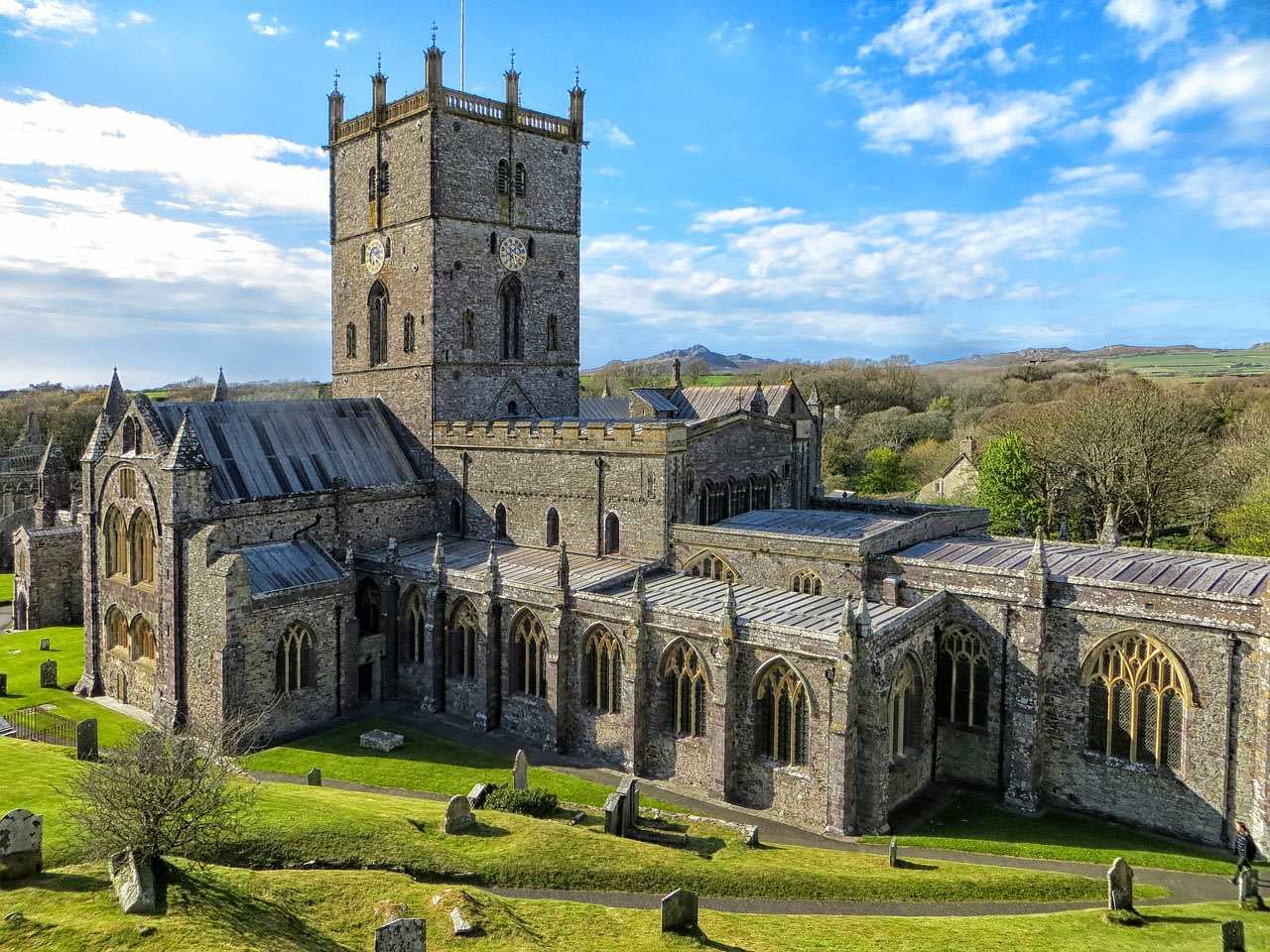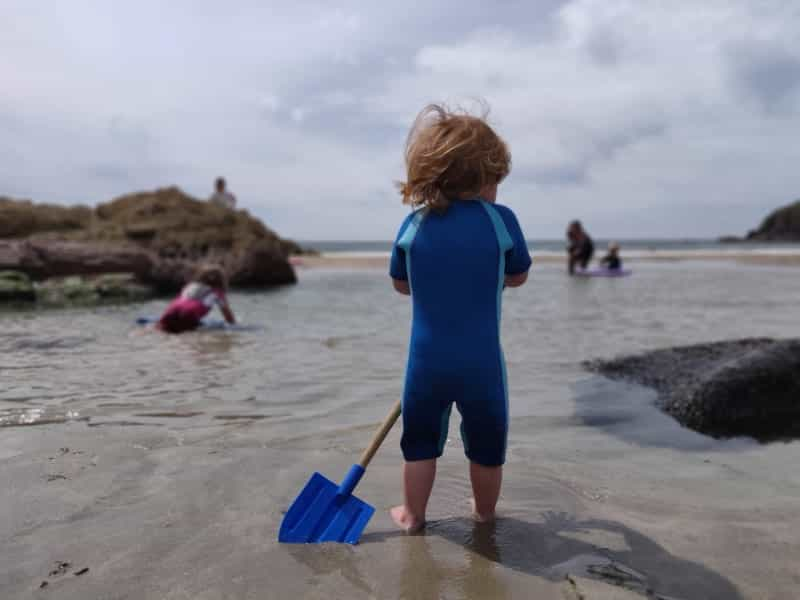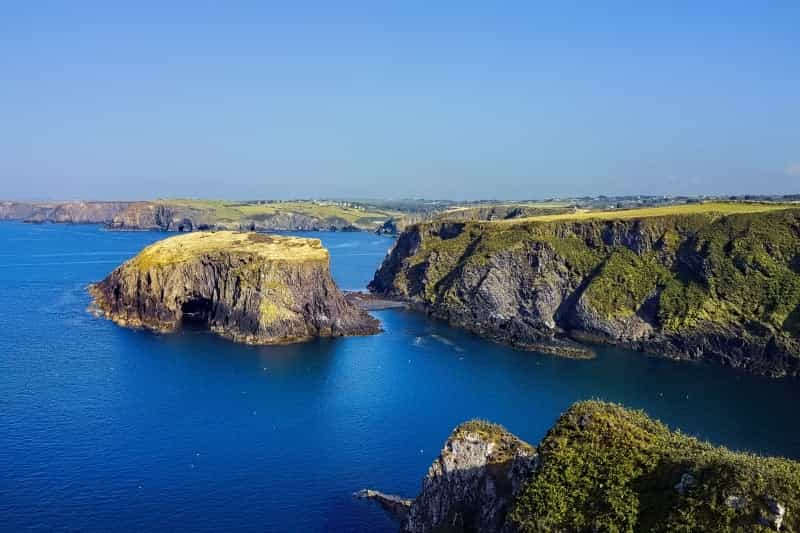8 Things To Do In St Davids, Pembrokeshire
St Davids is the smallest city in Wales – and indeed the whole of Britain. Named after St David, the patron saint of Wales, it was granted city status due to its splendid cathedral rather than any size considerations. But good things come in small packages, as the saying goes: from golden-sand beaches and dolphin-spotting tours to historic monuments and music festivals, there are plenty of things to do here. We’ve hand-picked eight of the best things to do in St Davids, Pembrokeshire. Read on to find out more.

Whitesands Bay
Whitesands Beach is an easy 45-minute stroll out of town, or a short bus ride (and there are car parks if you drive). This golden-sand, Blue Flag-certified beach is one of Wales’ finest, and a popular surf (and swimming) spot.
Head north to reach St David’s Head, a National Trust site. This headland was formed from ancient volcanic eruptions – some of the rock here is nearly 500 million years old. This is also one of the sunniest places in Wales, so during spring and summer you’ll see butterflies and birds flitting over a sea of wildflowers. At the end of the peninsula there’s an Iron Age fort.
Keen to dip your toes in the water? Read our guide to the best beaches in Pembrokeshire. Or take the plunge and explore the county’s best surfing beaches.
Ramsey Island
If gazing at Ramsey Island from the coast isn’t quite doing it for you, get closer with a boat trip. Trips run from the old St Davids Lifeboat Station in nearby St Justinian’s, and you can either simply take a ride around the island (look out for wildlife like seals, puffins and dolphins), or make a landing (an entrance fee will apply). On-shore, you can explore the 640-acre RSPB Wildlife Sanctuary or watch marine life in one of the island’s many inlets. There’s a visitor centre on the island.
If you’d rather head out to sea, whale- and dolphin-watching boat trips also leave from the area around St Davids. June to September is when you’ll have the best chance of a sighting.
St Davids Cathedral
If you only visit one place, visit the cathedral: after all, it’s the reason that St Davids is on the map. It’s also gorgeous, its 12th-century design rendered in soft purple sandstone. Once you’re inside, look up to see the soaring 16th-century oak ceiling.
St Davids Cathedral was built on top of the much older St Davids Monastery, an ancient religious site where pilgrims came from all across Wales to pay homage to their country’s patron saint (St David, in case it wasn’t clear). At the end of May it’s also home to the St Davids Cathedral Festival, a 10-day celebration of classical music.
Cross the river to visit St Davids Bishop’s Palace, a dramatic Gothic ruin. Its imposing architecture reminds visitors of the power held by medieval bishops, and the Bishopric of St Davids in particular. During the medieval era, a Bishop of St Davids would have been firstly one of the largest landowners in Wales; secondly, a Marcher Lord; and correspondingly both influential and able to build grand structures on a grand scale.
Turn your trip into a short break by staying at one of our St Davids campsites.
Pembrokeshire Woollen Mills
Step back in time with a visit to Solva Woollen Mill, the oldest continually working woollen mill in the county (it’s more than 100 years old).
Solva is only a 10-minute drive from St Davids – however, if you don’t drive (or if you just feel like a spot of shopping), Solva also has a gift shop right in the centre of town.

Pembrokeshire Coast National Park
St Davids is located in Britain’s only coastal national park. So it’s no surprise that there are plenty of walking routes in the area, including the lovely Pembrokeshire Coastal Path.
We recommend the stroll out to St Justinian’s, where you’ll have sweeping views across the sea to Ramsey Island – where you might spot seals or porpoises if you’re lucky – and can visit the Lifeboat Station to learn more about maritime rescue. This coast’s craggy cliffs and jagged rocks make storms treacherous, but the landscape very scenic.
Want to stay near the coast? Check out our campsites in the Pembrokeshire Coast National Park.
St Non’s Chapel and Well
Overlooking St Non’s Bay, this crumbling chapel is one of the oldest Christian buildings in Wales. St David was reputedly born here around 500 AD – it’s named after his mother, St Non. Near the chapel is a well, the waters of which are said to have healing properties. It’s still a site of pilgrimage: come for the miracles, stay for the views.

Oriel y Parc Gallery
Head to the centre of town for this lovely little gallery on the high street. Oriel y Parc combines a Pembrokeshire Coast National Park Visitor Centre with a rotation of art exhibitions that celebrate the local landscape. 3D artworks (ceramics, sculpture, glass and so on) are in the Discovery Gallery. Drop into the visitor centre for useful advice on walking routes, attractions to visit and more.
Caerfai Bay and Beach
This south-facing bay is the closest beach to St Davids. It gets lots of sunshine, plus views across to Skomer Island and Solva. Visit at low tide if you’re after sandy shores – at high tide, the beach disappears to become a little rocky cove at the foot of towering multi-coloured cliffs. Shelter from the cliffs means that it’s a good place to take a dip or go sea kayaking.
Looking for more things to do? Head further afield with our guide to the Pembrokeshire Coast’s top attractions.